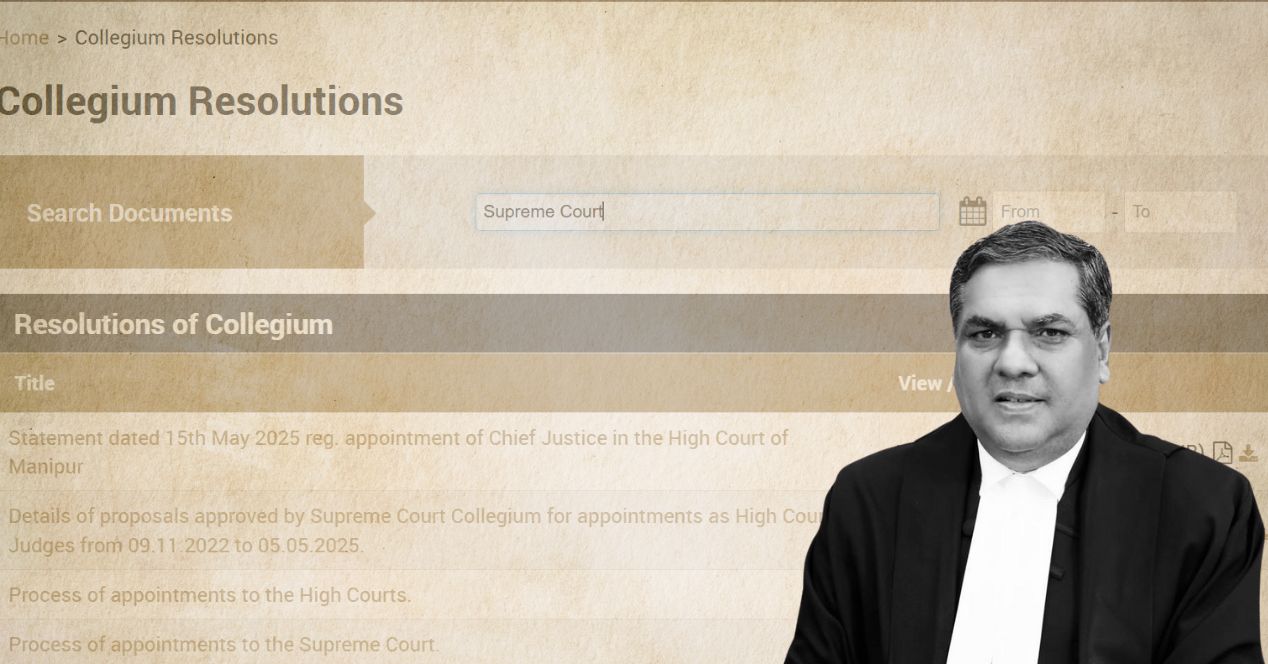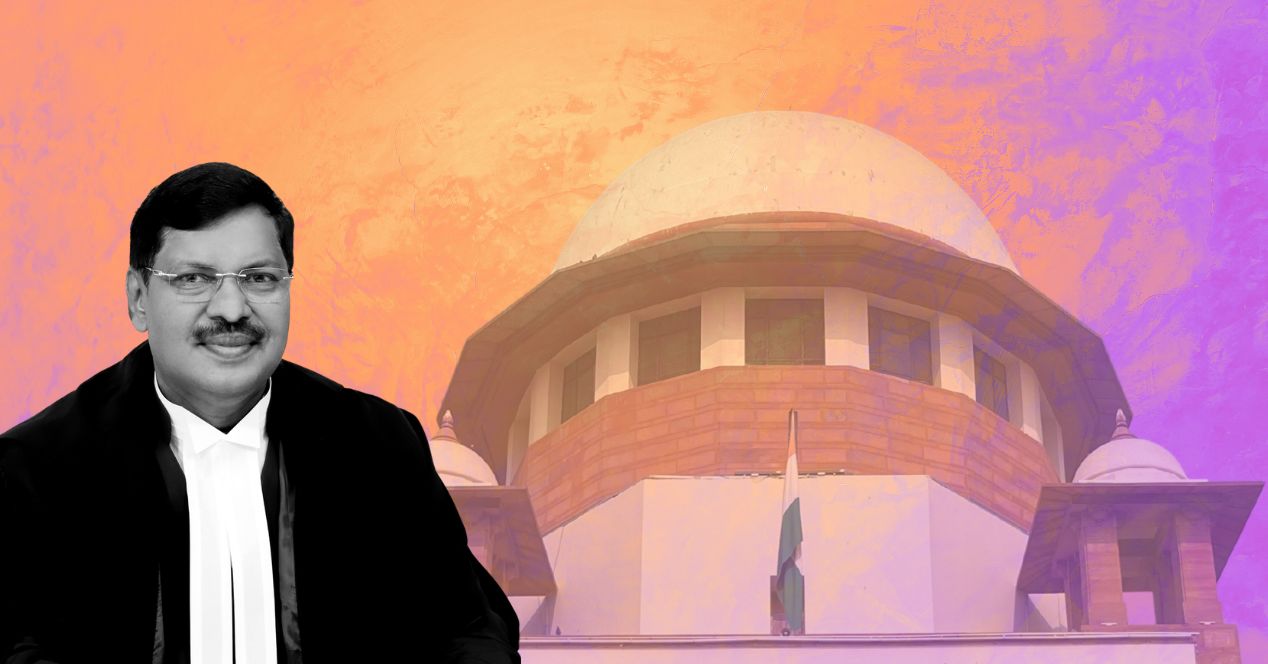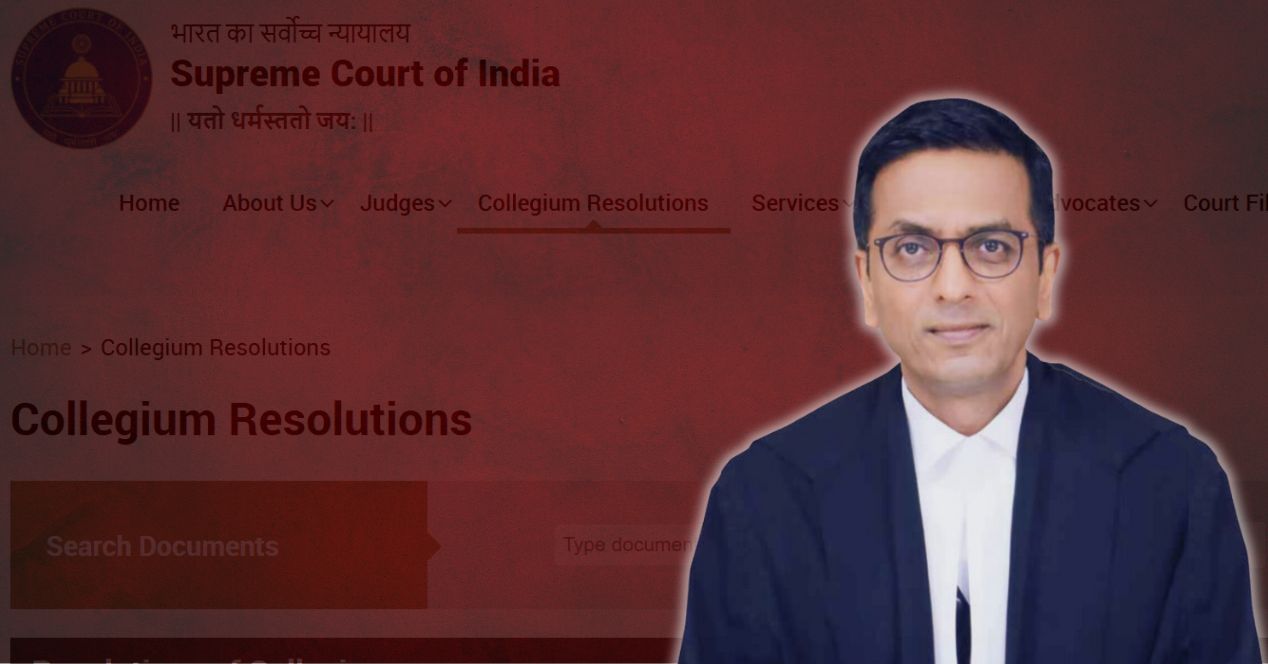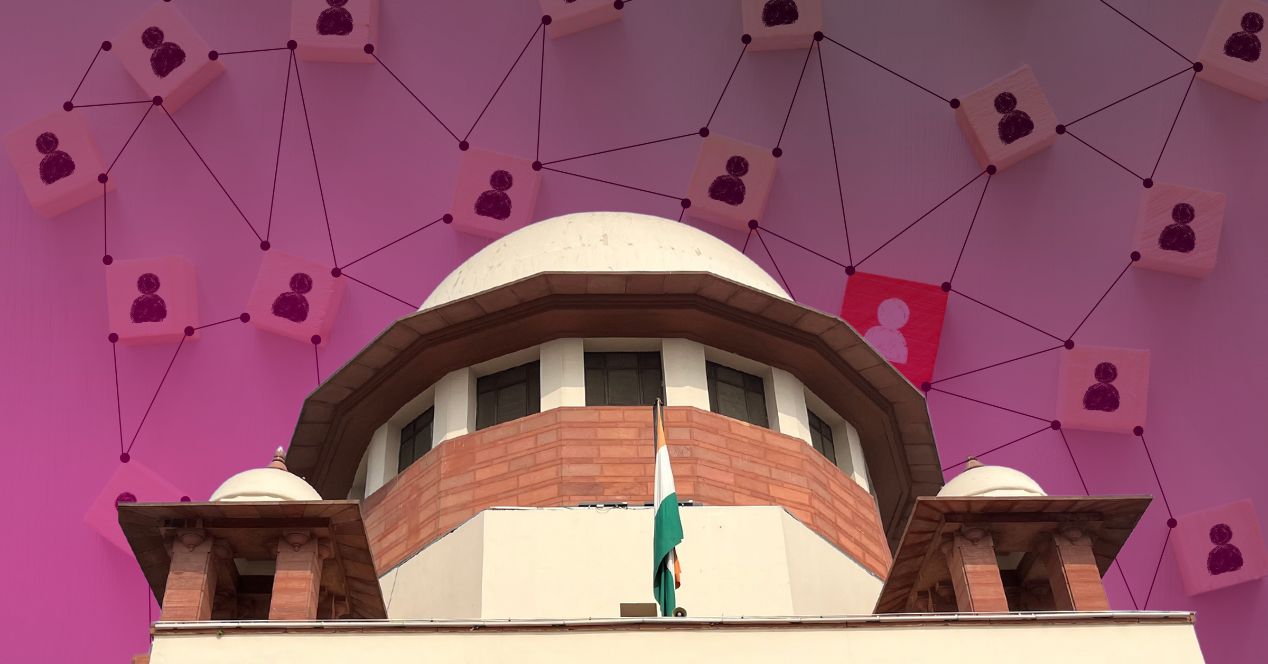Analysis
Union appoints three new judges to Supreme Court: May 2025
The elevations of Justices Anjaria, Bishnoi and Chandurkar will bring representation from the Gujarat, Rajasthan and Bombay High Courts
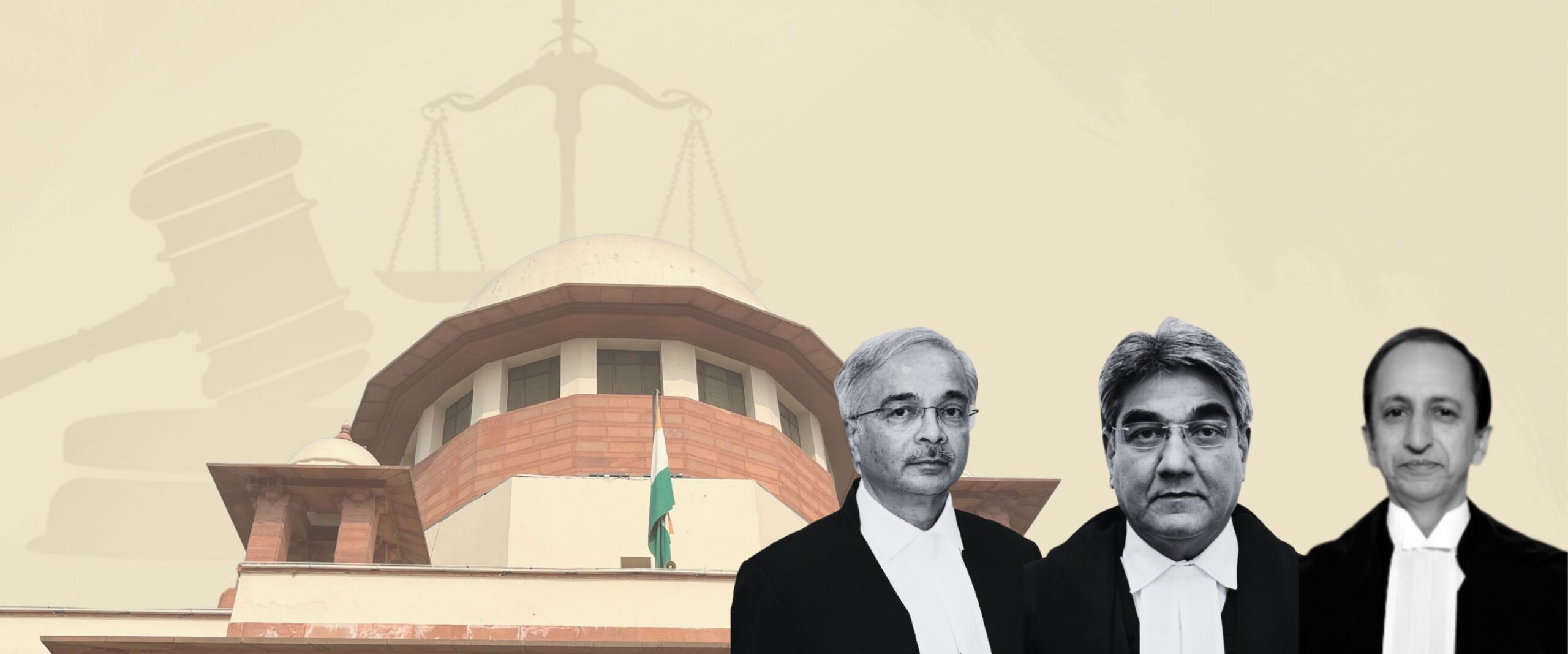
Today, the Union notified the appointments of Justices N.V. Anjaria, Vijay Bishnoi and A.S. Chandurkar as Judges of the Supreme Court. The Union’s notification comes just three days after the Supreme Court Collegium, led by Chief Justice B.R. Gavai recommended their names for elevation on 26 May. They are set to take oath on 30 May 2025.
With these appointments, the effective strength of the Supreme Court will be 34 judges.
Justice N.V. Anjaria
Justice Anjaria was the Chief Justice of the Karnataka High Court. He has held this post since 25 February 2024.
He hails from a family of lawyers and was born on 23 March 1965 in Ahmedabad. He has ancestral roots in Mandvi, Kachchh. He graduated with an LL.B degree from Sir L.A. Shah Law College in 1988 and pursued his Master’s in law the following year from the University of Ahmedabad School of Law, Ahmedabad.
He was first elevated to the Bench as an Additional Judge of the Gujarat High Court on 21 November 2011. His post became permanent on 6 September 2013.
His recommendation mentioned that his parent High Court was Gujarat. With Justice B.M. Trivedi’s retirement due on 9 June, Justice J.B. Pardiwala would have been the only judge at the Supreme Court hailing from Gujarat. Justice Anjaria’s elevation will increase the representation to two.
Justice Vijay Bishnoi
Justice Bishnoi has been the Chief Justice of the Gauhati High Court since 5 February 2024.
He was born in Jodhpur on 26 March 1964 and enrolled as an advocate on 8 July 1989. He practised at the Rajasthan High Court and the Central Administrative Tribunal at Jodhpur in civil, criminal, Constitutional, service and election-related matters.
He was appointed as an Additional Judge of the Rajasthan High Court on 8 January 2013 and took oath as a Permanent Judge on 7 January 2015. He served at the Rajasthan High Court for nine years before his elevation as Chief Justice of the Gauhati High Court.
The Collegium appears to have factored in that the Supreme Court Bench currently has only one sitting judge from the Rajasthan High Court—Justice Sandeep Mehta.
Justice A.S. Chandurkar
Justice Chandurkar currently serves as a judge of the Bombay High Court. He was first appointed as an Additional Judge of the High Court on 21 June 2013. He was born on 7 April 1965 and joined the Bar on 21 July 1988.
With Justice A.S. Oka’s retirement earlier this month, CJI Gavai and Justice P.B. Varale were the only sitting judges at the Supreme Court from the Bombay High Court. After CJI Gavai’s retirement in November this year, Justices Chandurkar and Varale will be the only sitting judges whose parent High Court is Bombay if no other is elevated.
Collegium considerations in recommendations
Collegium recommendations during the former CJI D.Y. Chandrachud would contain elaborate details considered by them before proposing a name. These considerations were:
- The seniority of the judges;
- Merit as demonstrated by the judgments and performance of the judges;
- Integrity;
- The need to ensure diversity at the Supreme Court in terms of region, gender and community;
- and the need for inclusion of marginalised and backward segments of the community.
Under CJI Sanjiv Khanna, the Collegium recommended three judges to the top court—Justices Manmohan, K.V. Chandran and Joymalya Bagchi. All brief recommendations focused on regional representation and merit. In Justice Bagchi’s case, the fact that he would be in line to become a future Chief Justice was given head.
On 6 May, in a move to increase transparency in the higher judiciary, the Supreme Court released an eight-page document detailing the factors considered by the Collegium in recommending judges to the Supreme Court. These are:
- Appointment by elevation of a Chief Justice or a Judge of the High Court or an eminent member of the Bar or a distinguished jurist.
- In case of elevation of a Chief Justice or a Judge of the High Court, a fair representation to be given to all the High Courts.
- Inter se seniority among the High Court Judges.
- Merit and integrity.
- The disposition rate of the Judge under consideration, while in the High Court.
- Disposition Rate should be considered in conjunction with other factors, such as the quality of judgments, complexity of cases, and court workload.
The CJI Gavai-led Collegium has no doubt taken these factors into account, especially to ensure better representation of High Courts.
However, other axes of representation, such as gender, and representation on the margins of religion, community and marginalised sections appear to be missing in this new document. These considerations become particularly important considering the following:
- After Justice Trivedi’s retirement, Justice B.V. Nagarathna remains the only woman judge on the Supreme Court Bench.
- Justice Ahsanuddin Amanullah remains the only Muslim judge and Justice A.G. Masih the only Christian judge.
- In last year’s recommendation for the elevation of Justice R. Mahadevan from Tamil Nadu, the Chandrachud-led Collegium noted that he represented the “backward community”. Subsequent elevations after CJI Chandrachud’s retirement have refrained from mentioning such factors.
- After CJI Gavai’s retirement, Justice P.B. Varale will be the only Dalit judge at the top court if no other is elevated.

